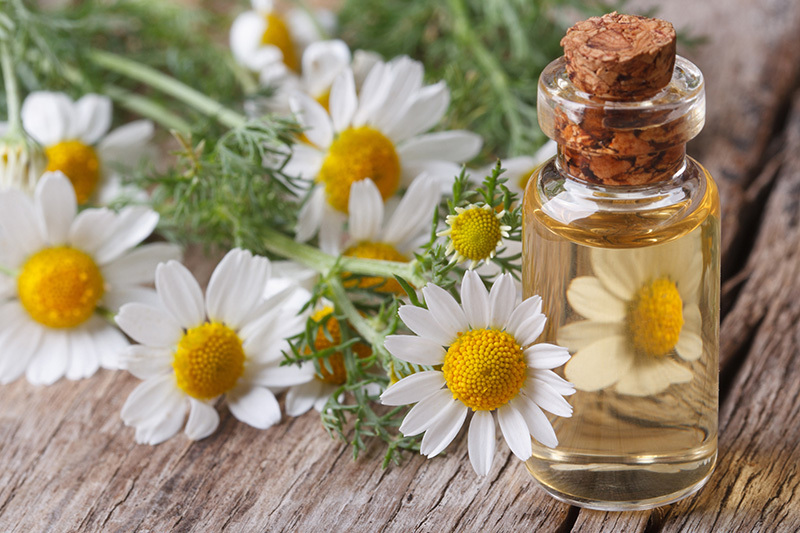Discover 8 Mind-Blowing Facts About Sunflowers You Never Knew
Posted on 26/08/2025
Discover 8 Mind-Blowing Facts About Sunflowers You Never Knew
Sunflowers, with their vibrant yellow petals and towering stems, are among the most recognizable and beloved blooms in the world. But beneath their cheerful facade lies a fascinating world of sunflower facts that are sure to surprise even the most avid gardeners and nature lovers. Whether you're captivated by their beauty or intrigued by their symbolism, there's so much more to sunflowers than meets the eye.
Let's embark on a journey to discover eight incredible facts about sunflowers you probably never knew, and gain a newfound appreciation for these stunning plants.
1. Sunflowers Track the Sun: The Phenomenon of Heliotropism
One of the most astonishing characteristics of sunflowers is their ability to follow the sun across the sky, a process known as heliotropism. Young sunflower buds and leaves exhibit this extraordinary behavior, facing east in the morning and gradually turning westward by evening. At sunset, they reset themselves to face the east again.
- Why do sunflowers track the sun? Scientists believe this movement boosts photosynthesis, maximizing their growth by channeling energy from the sun.
- Fun fact: As sunflowers mature and their stems stiffen, they permanently face east, optimizing pollination by warming up earlier and attracting more bees.
This remarkable ability not only showcases the adaptability of sunflowers but also highlights their unique survival strategies, making this sunflower fun fact truly mind-blowing.

2. Sunflowers Are Native to North America, Not Europe
Contrary to popular belief, sunflowers originated in North America and have a rich history dating back at least 4,500 years. Archaeological evidence suggests Native Americans first domesticated sunflowers for various uses, including food, oil, dye, and medicine.
- Early Uses: Native tribes valued sunflowers for their edible seeds and oils, which provided an essential source of nutrition.
- Spread to the World: Spanish explorers introduced sunflowers to Europe in the 16th century, turning them into global agricultural staples.
Today, we often associate sunflowers with European art and culture, but their true heritage is deeply rooted in North America--a mind-blowing sunflower fact that may change how you see this iconic bloom.
3. Sunflowers Are Not Just One Flower--They're Hundreds!
It might surprise you to discover that what appears to be a single sunflower bloom is actually a composite of hundreds, sometimes thousands, of tiny flowers. Botanically known as a composite flower, each "petal" you see is an individual floret.
- The Center: Each sunflower's central disk contains tiny tubular flowers, each capable of producing a seed.
- The Petals: The prominent yellow "petals" or ray florets surround the disk, designed to attract pollinators.
This fascinating structure makes sunflowers one of the most complex and efficient bloomers in the plant kingdom.
4. Sunflowers Can Grow to Astonishing Heights
If you thought sunflowers were just garden-variety tall, you're in for a pleasant surprise! Sunflowers are renowned for their impressive height. While the average sunflower stands between 5 and 12 feet tall, some species reach record-breaking heights.
- World Record Holder: The tallest sunflower ever recorded was grown by Hans-Peter Schiffer in Germany in 2014. It measured an incredible 30 feet, 1 inch (9.17 meters)!
- Giant Varieties: Some cultivars like the 'Russian Giant' and 'Mammoth' are bred specifically for their height and size, making spectacular additions to gardens and agricultural shows.
This astounding growth capability is just another one of the amazing things about sunflowers that never fails to wow observers.
5. Sunflowers Have Powerful Environmental Benefits
Sunflowers do much more than brighten up gardens--they play a crucial role in environmental sustainability. Their roots and stems help cleanse soil and water in a process known as phytoremediation.
- Soil Cleansers: Sunflowers are used to extract toxic substances, such as lead, arsenic, and even radioactive contaminants from the environment.
- Nuclear Disaster Cleanup: After the Chernobyl and Fukushima nuclear disasters, sunflowers helped reduce radioactive pollutants from the affected soil and water.
These remarkable cleaning abilities are a unique sunflower benefit that goes far beyond their decorative beauty.
6. Sunflowers Inspire Mathematics and Science
If you look closely at the spiral arrangement of seeds in a sunflower's head, you'll notice a pattern that's not just visually appealing but also mathematically significant. Sunflowers follow the Fibonacci sequence--each seed is positioned at a specific angle, creating spirals that maximize seed arrangement.
- Nature's Geometry: The number of spirals in each direction usually matches consecutive Fibonacci numbers (e.g., 34 and 55).
- Optimal Packing: This arrangement allows for the most efficient packing of seeds within the disk, ensuring maximum reproduction and growth.
This occurrence is a stunning example of how sunflowers link art, science, and nature, revealing another dimension to their fascinating story.
7. Sunflowers Symbolize Positivity, Loyalty, and Longevity
Sunflowers have held deep symbolic meanings across cultures and generations. Because they turn towards the sun, they are often seen as emblems of positivity, vitality, and unwavering faith.
- Positivity: Their bright faces are believed to lift spirits and symbolize happiness and hope.
- Loyalty: Sunflowers often represent loyalty and adoration, making them popular choices in floral arrangements and gifts.
- Longevity: Thanks to their robust growth and enduring seeds, they also stand for long life and resilience.
From art to folklore, sunflowers are rich in symbolism, making them cherished not just for their looks but also for what they represent.
8. Sunflowers Are a Nutritional and Economic Powerhouse
Beyond their beauty, sunflowers play a pivotal role in nutrition and global agriculture. Sunflower seeds and oil are loaded with health benefits and are staple products the world over.
- Nutritional Value: Sunflower seeds are packed with protein, fiber, healthy fats, vitamin E, magnesium, and selenium--perfect for a wholesome snack or ingredient.
- Healthy Oil: Sunflower oil is prized for its high smoke point, light flavor, and heart-healthy unsaturated fat content, making it a favorite in cooking and food production.
- Global Impact: Major sunflower producers like Russia, Ukraine, and Argentina supply millions of tons of sunflower seeds and oil annually, fueling massive economies and providing livelihoods for countless farmers.
Whether enjoyed as a snack or incorporated into your cooking, sunflowers offer tremendous value far beyond their aesthetic charm.
Frequently Asked Questions About Sunflowers
Why are sunflowers always facing east?
Most mature sunflowers permanently face east because it warms them up earlier in the day, attracting more bees and optimizing pollination. This phenomenon results from their growth hormones responding to sunlight--a process that ceases as the stem hardens at maturity.
Can sunflowers grow in any climate?
Sunflowers are remarkably adaptable but thrive best in warm, sunny climates with well-drained soil. They require full sunlight (at least 6-8 hours daily) and can tolerate drought once established.
Are all sunflower varieties edible?
Most sunflowers are edible, especially their seeds and oil, which are commonly consumed. However, not all varieties produce seeds ideal for human consumption--some are ornamental and bred primarily for their blooms.

Final Thoughts: Why Sunflowers Are Truly Extraordinary
From their sun-tracking behavior and mathematical brilliance to their environmental prowess and nutritional value, sunflowers are full of surprises. Whether you view them as a symbol of optimism, an ecological powerhouse, or simply the centerpiece of your garden, learning more about unusual sunflower facts deepens your appreciation for this remarkable plant.
Next time you admire a sunflower's bright face, remember: behind its simple beauty lies a world of wonder. Let these eight mind-blowing facts inspire you to see sunflowers in a completely new light!
Sunflower Facts: Key Takeaways
- Sunflowers follow the sun in their youth, a process called heliotropism.
- They originated in North America and were cultivated by Native Americans for thousands of years.
- A single sunflower is a composite of hundreds or thousands of tiny flowers.
- Gigantic sunflowers can reach heights of 30 feet or more.
- They are used in environmental cleanup projects due to their phytoremediation abilities.
- Sunflowers display Fibonacci patterns in the arrangement of their seeds.
- These blooms are powerful symbols of positivity, loyalty, and long life.
- They provide nutritional, economic, and ecological benefits worldwide.
Explore your own garden or a local sunflower field and witness these mind-blowing sunflower facts firsthand. You'll never look at these golden giants the same way again!







